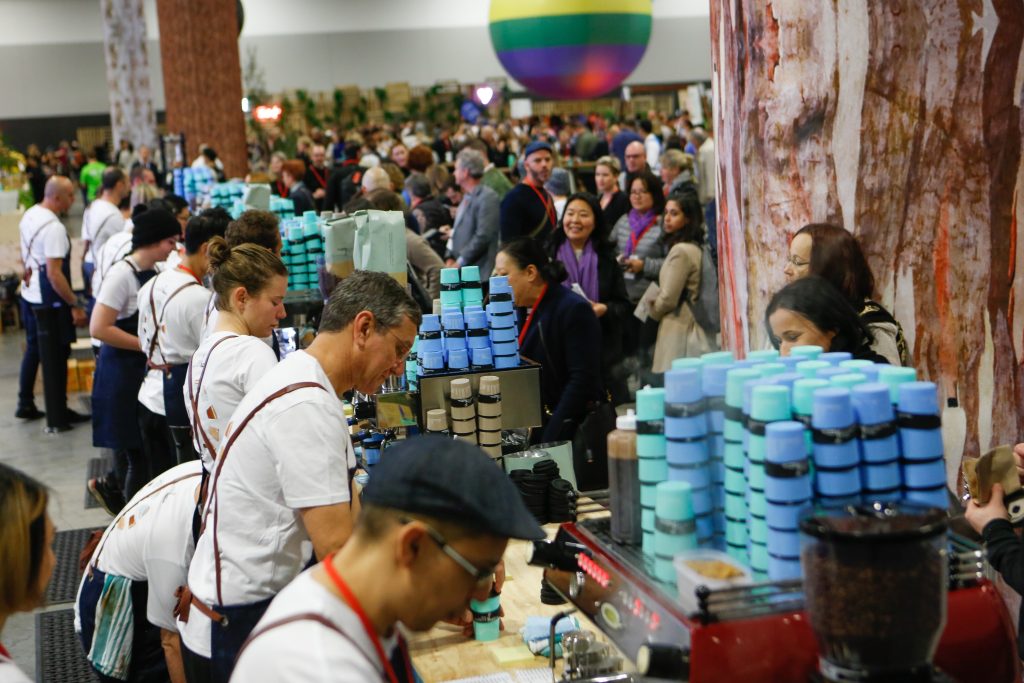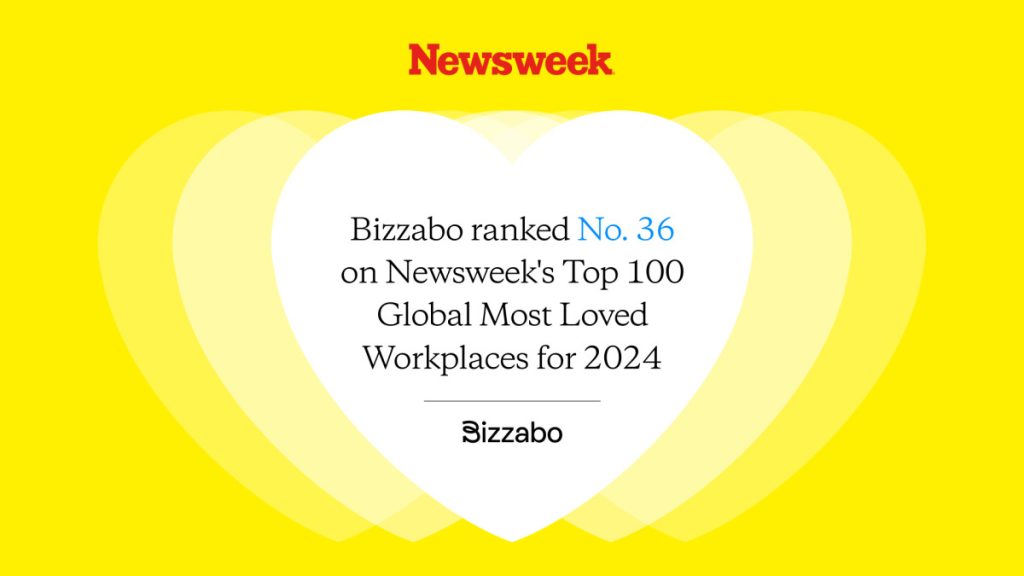The Ultimate Sustainable Event Management and Planning Checklist


Now more than ever, sustainability is top of mind for event planners because it’s a top priority for event attendees. It doesn’t matter if you’re hosting a team summit, client meet-and-greet, or large trade show — attendees want to participate in events prioritizing a safe, healthy planet.
In our recent State of in-person B2B conferences report, 26.8% of attendees said sustainability and DE&I are their No. 1 priority, and 31.2% said they’re their No. 2 priority when choosing to attend an event. On that note, 13% of event organizers identified DE&I as a major challenge in planning their most recent B2B conference.
So how do you plan a sustainable event?
Read on to learn more about why sustainability in the events industry matters and what you can do to create a sustainable event strategy that makes you proud and keeps attendees coming back year after year.
Why Sustainable Event Management Matters
Make no mistake: Sustainability — and climate change — are key points of concern for the events industry. After all, events can harm the planet in several ways, including excessive transportation emissions, energy consumption, and tons of food and paper waste.
Of course, let’s not forget about all the event swag that winds up in landfills — branded stress balls, plastic water bottles, and beverage koozies. Thankfully, reducing and modifying swag is now a top sustainability trend in the events industry.
Research shows that human activities are responsible for almost all greenhouse gas increases over the past 150 years. As such, it’s important to remember that your choices as an events coordinator directly impact the environment.
As the saying goes, you can either be part of the problem or the solution.
To this end, many companies and organizers are getting on board with creating sustainable events. One study found that 83% of meeting professionals say their organizations consider sustainability when planning meetings and events. Does yours?
3 Sustainability Phrases Event Managers Need To Know
Event leader Melanie Reid noted three important sustainability phrases that every event leader should know inside and out. Use these concepts to help drive sustainability awareness across your organization.
1. ESG Standards
Environmental, social, and governance (ESG) standards measure how sustainably and ethically a company operates. Increasingly, socially conscious investors are deciding to support companies that prioritize ESG.
For an example of what ESG looks like in practice, check out Coca-Cola’s ESG Resource Center.
2. Sustainability Intelligence
Sustainability intelligence involves using big data to make environmentally appropriate decisions. For example, organizations can track waste production year over year to determine how much waste annual events send to landfills — and whether efforts to curb waste are paying off. Check out ESGeo and Cortex Sustainability Intelligence for more on sustainability intelligence services.
3. Conscious Consumption
Conscious consumption (or conscious consumerism) refers to engaging in the economy while being aware of how your consumption affects society and the environment. Generally, this can include being conscious of the food or items you buy and making more sustainable choices to benefit the environment (e.g., eating less meat or buying used clothes).
Sustainability-driven Infrastructure Checklist
Events won’t become more sustainable on their own. To improve them, you need to pay attention to every little detail — from where you position recycling containers to the types of utensils you offer. To get started, create a foundation on which you can build a sustainable event strategy using this checklist:
☐ Evaluate your existing practices and attendee feedback.
☐ Use MeetGreen’s “My Event Footprint” calculator to assess your event’s impact.
☐ Develop and maintain comprehensive corporate ESG standards.
☐ Audit all partners to ensure they align with your policies and ESG.
☐ Train all team members and stakeholders on ESG and appoint an ESG leader to ensure follow-through and policy adherence.
☐ Work with carbon offset organizations to drive meaningful change. For example, Radisson recently partnered with offset provider First Climate to reduce greenhouse gas emissions and create a positive social impact.
☐ Check out the Events Industry Council’s Sustainable Event Standards (EIC-SES) and consider pursuing EIC-SES certification.
Sustainable Event Planning Checklist
After you set a foundation for sustainable practices, you can focus on planning. Here’s your checklist:
☐ Ensure the vendors you work with use sustainable sourcing and delivery practices.
☐ Study each venue carefully and assess its ESG, power sources, management policies, and commitment to sustainability.
☐ Partner with venues and vendors with third-party sustainability certifications (e.g., LEED, APEX/ASTM, Green Key, and GreenLeaders).
☐ Ditch the plastic and offer eco-friendly badges — better yet, use an app.
☐ Create reusable, long-lasting signage that you don’t have to throw away after the event.
☐ Avoid printed materials or limit to printed materials for those with disabilities.
☐ Incentivize public transportation or partner with a rideshare company like Lyft to offer event-specific discounts.
☐ Partner with local bicycle or scooter companies to offer alternative transportation options.
☐ Plan a sustainable event menu using food grown or produced within 250 miles of the event, seasonal produce, imperfect foods, certified organic foods, water-wise foods, and so on.
☐ Communicate your sustainability efforts to attendees before and during the event.
Checklist for Sustainable Swag
Providing sustainable swag for attendees can communicate that your event is committed to reducing waste and helping the planet. Remember: Don’t offer swag just for swag’s sake. Consider the long-term environmental benefits or challenges of the items you give attendees.
☐ Offer curated gifts from small business makers and local artisans.
☐ Ensure items are environmentally conscious and ethically sourced, including packaging, product, and so on. (Think bamboo!)
☐ Request exhibitors offer sustainable, intentional swag based on your event’s sustainability policies.
☐ Provide durable, long-lasting, and reusable products that people will enjoy — not throw out the first chance they get.
☐ Consider eGifts or discounts instead of physical objects. Keep in mind that whatever people receive, they have to bring back home with them — and extra weight on planes leads to higher carbon emissions.
☐ For high-ticket raffles and prizes, consider sustainable items like electric cars and e-bikes.
☐ Think outside the box and offer NFTs, virtual 1:1s with executives, reusable straws and flatware, and other non-traditional swag.
Checklist for Responsible Waste Management
Events produce significant waste — especially for large conferences with thousands of attendees. That being the case, responsible waste management is critical for success. If you’re looking to improve the way your events handle waste management, here you go:
☐ Provide recyclable and compostable materials to attendees.
☐ Invest in reusable cups and other materials not as swag but as an investment in a greener event industry.
☐ Place recycling and composting cans throughout your venue and minimize regular trash cans.
☐ Create clear signage for what goes in each bin so there is no cross-contamination in your bins.
☐ Commit to a zero plastics policy at your event.
☐ Collect and analyze reports detailing power consumption, water usage, and waste removal after each event.
☐ Research different waste removal providers and prioritize companies with eco-friendly policies and procedures.
☐ Request all leftover food be donated to local organizations and food banks.

Source: Reusable coffee cups at TEDxSydney (Photo by Globelet Reusable on Unsplash)
Checklist for Creating Sustainable Virtual or Hybrid Events
Many companies are now offering virtual or hybrid events to reduce emissions. According to our State of In-person Events survey, 68% of event organizers plan to have a virtual component at their next in-person event, and 53% of organizers are “focused” or “very focused” on a virtual events strategy for 2023.
But virtual events aren’t without impact on the environment. The International Journal of Environmental Studies analyzed a six-hour conference on Zoom and found that the event generated the equivalent of 1,324 kg of carbon dioxide emissions:
- 64% of emissions came from network data transfer.
- 19% of emissions came from pre-conference planning meetings.
- 11% of emissions came from computer use during the conference.
You can make hybrid and virtual events even more sustainable by making a few minor adjustments:
☐ Encourage attendees and speakers to be mindful of lighting to lower carbon-fueled energy consumption.
☐ Host events earlier in the day to encourage the use of natural light.
☐ Work with an event software partner who uses Amazon’s AWS, which is taking steps to reduce impact by decreasing water use and relying on wind and solar farms.
☐ Minimize pre-event meetings to reduce energy consumption.
☐ Encourage attendees and participants who are not actively speaking or participating in turning off their cameras, reducing environmental impact by 96%!
☐ Plant trees to offset your virtual event’s carbon emissions from servers, data transfers, cloud systems, and search engines.
☐ Support solar initiatives at the corporate level, if possible. (If solar electricity were used for conference-related activities, the overall emissions generated by events would fall by three-quarters to just 344 kg of carbon dioxide.)
Fun fact: Chances are you spend a lot of time searching Google while planning your event. But did you know there is a sustainable search engine? It’s called Ecosia, and they’ll plant a tree in biodiversity hotspots like Burkina Faso, Indonesia, and Brazil for every search you make using their search engine.
Checklist for Evaluating Event Sustainability
Event sustainability isn’t something your company can expect to master overnight. It’s essential to assess your progress over time and work to make each event more sustainable than the last.
If you’re wondering how to make your next event more sustainable, consider the following steps:
☐ Use net promoter score (NPS) surveys to collect attendee feedback about how participants perceive your sustainability efforts.
☐ Ask your attendees, sponsors, and speakers what they’d like to see regarding sustainable practices; they may have insights or ideas you’d never think of.
☐ Talk to attendees, sponsors, and speakers directly for anecdotal and direct feedback.
☐ Work with a sustainable event consultant specializing in discovering and eliminating wasteful practices.
☐ Download MeetGreen’s Sustainable Event Kit and consider purchasing MeetGreen Calculator 2.0® to take a future-proof approach to eco-friendly event planning.
Tools, Resources, and Strategies for Sustainable Event Management
In the age of digital transformation and heightened environmental awareness, sustainable event management has become a top priority for organizers worldwide. Leveraging the right tools, resources, and strategies can reduce an event’s environmental footprint and enhance its overall experience for attendees. Here are some critical considerations for sustainable event management:
Mobile event apps: One of the most impactful tools in the arsenal of a sustainable event planner is the mobile event app. These apps:
- Reduce paper waste: By digitizing event schedules, maps, speaker bios, and other materials, you can significantly reduce the need for printed materials.
- Enhance engagement: Push notifications, live polls, and interactive maps can boost attendee engagement and provide real-time updates.
- Collect feedback: Instant feedback through the app can help organizers make on-the-spot adjustments and improve future events.
- Promote carpooling and ride-sharing: Some apps have features that allow attendees to coordinate transportation, reducing the carbon footprint associated with travel.
Virtual and hybrid events: Embracing virtual or hybrid models can drastically reduce the environmental impact of events. These formats cut down on travel emissions and reduce the need for physical resources.
Eco-friendly suppliers: Partner with suppliers who prioritize sustainability. This includes caterers who source local and organic foods, venues that use renewable energy, and decorators who opt for reusable materials.
Waste management: Implement a robust waste management strategy focusing on the three Rs: Reduce, Reuse, and Recycle. Consider composting organic waste and donating leftover food to local charities.
Sustainable transportation: Encourage attendees to use public transportation, carpool, or even cycle to the event. Offer incentives or discounts for those who choose eco-friendly transportation options.
Educate and engage: Use your event to educate attendees about sustainability. Workshops, seminars, and interactive sessions can inspire attendees to adopt sustainable practices in their daily lives.
Incorporating these tools, resources, and strategies into your sustainable event planning process can significantly impact its environmental impact. As the world moves towards a more sustainable future, event organizers must lead the way and set a positive example for others.
Take Action To Create More Sustainable Events
Remember: There’s only one planet, and we all live on it and must preserve it for future generations. That’s why taking action and looking for ways to improve sustainability and promote responsible environmental policies for your upcoming events is essential.
Thanks for reading this checklist on how to plan a sustainable event; we hope it helps you tackle eco-friendly event planning. For further reading on what you can do to make this happen, check out our article offering tips on making your next event more sustainable.
Editor’s note: This was published in September 2022 and has been updated for quality and relevance.


